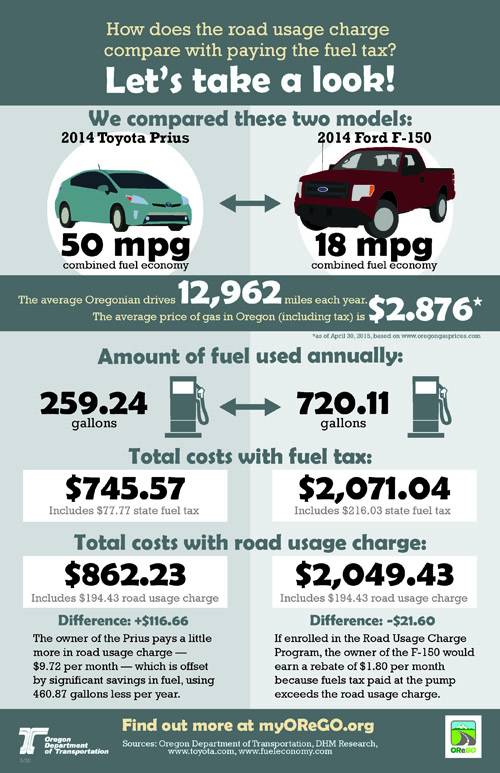 BY KIM MOORE | RESEARCH EDITOR
BY KIM MOORE | RESEARCH EDITOR
The technology at the center of Oregon’s road usage fee reform.
BY KIM MOORE | RESEARCH EDITOR
The technology at the center of Oregon’s road usage fee reform
 During his 20-year tenure at insurance company Allstate in Chicago, Nate Bryer built a portable device that collects information on policyholders’ driving habits to reward customers for safe driving behaviors.
During his 20-year tenure at insurance company Allstate in Chicago, Nate Bryer built a portable device that collects information on policyholders’ driving habits to reward customers for safe driving behaviors.
A similar device is now at the center of a state-led effort to reform Oregon’s outmoded gas tax with a first-of-its kind mileage charge collection system.
Two years ago engineering company Danlaw hired Bryer to build a similar driver tracking system for use in the Oregon Department of Transportation’s (ODOT) new voluntary road usage program, known as OReGO.
Volunteers who sign up for the program, which launches on July 1, will pay a fee of 1.5 cents for every mile they drive. Revenues would be used to fund badly needed road maintenance.
This fee is an alternative to Oregon’s 30 cents per gallon gas tax, which drivers pay when they fill up at the pump.
Bryer is the vice president of innovation at Azuga, a subsidiary of Danlaw, and one of three vendors ODOT is using to manage the program.
Azuga will provide volunteers with a free portable device that looks like a USB drive. This device can be plugged into a port near the steering wheel of most vehicles.
The device tracks mileage and the amount of fuel being collected in the vehicle. Each month Azuga sends a statement to users for road charges based on reported miles, with a reimbursement for fuel tax.
Azuga has added services to the device to incentivize drivers to sign up to the initiative. These include a scoring system for safe driving behavior and a log of trips.
It plans to add more features, including vehicle maintenance alerts that would inform drivers when they need to have an oil change, for example.
Another feature would allow users to be notified if their car goes outside of a specific location, a feature that could help car owners track their teenage drivers, for example. The device does not track mileage for driving on private roads or out of state.
“We consider this a coaching opportunity for drivers to see what their driving looks like” said Bryer.
Oregon is in urgent need of reforming the way it funds the escalating costs of road maintenance. The gas tax, which Oregon pioneered in 1919, no longer collects enough money to pay for urgent repairs.
Part of the reason for the funding shortfall is the proliferation of more fuel-efficient cars, which have resulted in drivers cutting down on gasoline use.
The economic costs of not reforming the tax system are dire. ODOT estimates higher transportation costs resulting from declining pavement and bridges will likely reduce Oregon’s future economic growth and could cost the state 100,000 lost jobs.
The OreGo program is purely voluntary and the number of registrants is capped at 5,000. Of this total, 1,500 registrants will have vehicles that achieve less than 17mpg; 1,500 vehicles will achieve 17-22mpg; and the rest will consist of vehicles that achieve more than 22 mpg.
So far 2,500 people have shown interest in signing up to the program, said Tom Fuller, ODOT public information coordinator.
One drawback of the initiative is that it could dissuade drivers of fuel-efficient cars from signing up because they will likely pay a fee under the new road usage program. Drivers that have vehicles that achieve less than 17mpg will receive a rebate, while drivers with vehicles that achieve more than 22mpg will pay money under the initiative, said Fuller.
Fuller said the program creates a more fair road maintenance charge for drivers of fuel-efficient cars. “When the fuel efficiency of vehicles increase, drivers are not paying as much into bridge and road maintenance. Part of our argument to fuel-efficient drivers is that you are saving so much in energy (costs) that you will also ensure roads are safe and efficient.”
One way to get around penalizing fuel efficient car drivers is to have a tiered fee system for the various fuel efficiencies of the vehicles in the program, said Chris Hagerbaumer, deputy director of Oregon Environmental Council. She suggests gas guzzling cars could be charged a higher mileage fee and fuel-efficient cars a smaller fee.
A similar tiered fee structure could be implemented for drivers of long distances. “Other pushback would be from rural residents who have to drive long distances. You could create a system where rural drivers could pay less,” said Hagerbaumer.
Azuga will initially receive 40% of revenues from the 1.5 cents per mile road charge fee for its services. During the testing phase Azuga will track potential problems with the system, such as how often drivers unplug the mileage tracking device to avoid payment, or how often the tracking signal is lost as a result of the driver going underground to use subterranean parking lots, for example.
For the program to be a success it would have to be made mandatory statewide, which the legislature would have to approve. The aim of the pilot program is to test how the system and the public-private partnerships with vendors work in practice, said Fuller.
Feedback from voluntary participants will be used to inform lawmakers whether to make the program compulsory. Fuller estimates discussion on the future of the program will be brought up in the 2017 legislative session.

